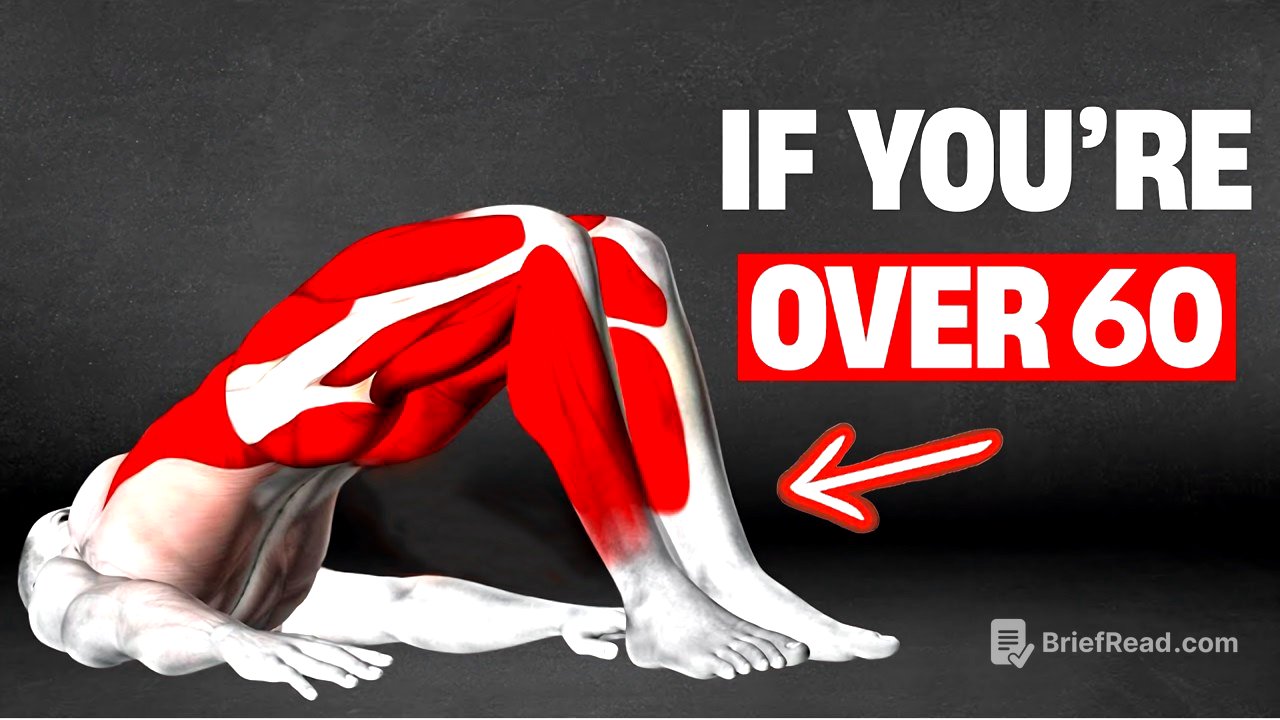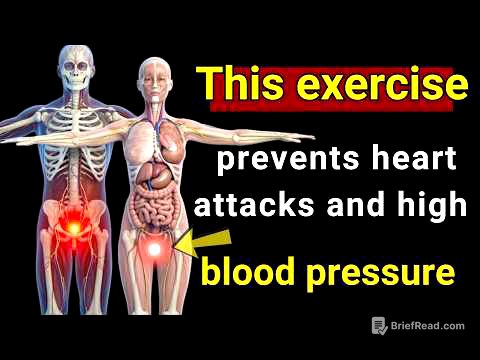TLDR;
This video by Shrey Vazir, a physiotherapist, outlines 10 essential exercises to help individuals in their 50s, 60s, and 70s gain strength, improve movement, and feel younger. It emphasizes the importance of progressive strength training (PST) to combat muscle loss (sarcopenia) and includes practical tips to avoid common exercise mistakes. The routine covers exercises for leg strength, upper body, core, and grip, along with a cardio recommendation.
- Focus on 10 essential exercises for strength and mobility.
- Progressive Strength Training (PST) is key to reverse muscle loss.
- Incorporate Push, Pull, and Legs framework for balanced workouts.
#1 Leg Strength Exercise for Older Adults [0:27]
The video starts with the slow sit stand or chair squat, an exercise recommended by Tufts University for strengthening hips, thighs, and glutes, which are crucial for walking and climbing stairs. To do this, stand in front of a chair with feet slightly wider than shoulder width. Lower yourself slowly towards the chair, touch it briefly, and stand back up quickly. Start with 10 reps, rest, and repeat. You can use armrests for support or hold a weight for a challenge.
10-Step Guide for Incredible Strength [1:36]
The second exercise targets the upper body, focusing on arms, shoulders, and chest. The countertop press up is demonstrated using a sturdy kitchen counter. Stand arms length away, place hands shoulder width apart, and lower your chest towards the counter before pushing back up. Aim for 10 reps, rest, and repeat. Easier versions include wall push-ups, while full press-ups offer a greater challenge.
Biggest Exercise Mistake [3:03]
A common mistake is thinking walking and stretching are enough. Research shows these don't combat sarcopenia, the muscle loss after 60. A 2024 study indicates that Progressive Strength Training (PST) can prevent and reverse sarcopenia. PST involves gradually increasing exercise challenges as they become easier, similar to how plants need more water as they grow.
Groundbreaking Study Reveals Anti-Aging Exercise Approach [3:26]
The video highlights a 2024 study showing that older adults can prevent and even reverse sarcopenia with Progressive Strength Training (PST). This method involves gradually increasing the difficulty of exercises as they become easier. By slowly ramping up exercises with PST, muscle loss can be reversed, helping individuals in their 70s move like they're decades younger.
How to Improve your Strength, Stability and Endurance [4:02]
The third exercise, the standing row, targets the back, core, and trunk muscles. Stand with feet shoulder width apart, holding light weights or soup cans. Lean forward comfortably, keep your core tight, and pull the weights towards your chest, squeezing your shoulder blades. Lower slowly and repeat 10 times for two to three sets. This strengthens the latissimus dorsi, the largest muscle in your back.
A Fantastic Exercise to Improve Posture [5:53]
Exercise five involves using resistance bands to improve posture and build strength in pulling muscles like the back, shoulders, and biceps. Anchor a resistance band at belly button height and pull the band towards you, keeping your elbows close to your body and squeezing your shoulder blades. Aim for 10 to 12 repetitions, two to three sets, three times a week.
How to Live Longer by Strengthening Your Grip! [6:47]
Exercise six focuses on grip strength, a significant predictor of mortality. The farmer carry involves holding heavier weights in each hand and walking in a straight line for 10 to 15 steps. Keep your core tight and hands slightly away from your body. Repeat for two to three sets. This exercise boosts grip strength and mimics real-life tasks like carrying shopping bags.
The Push-Pull-Legs Framework [10:18]
The video suggests following a Push, Pull, and Legs framework with three sessions per week. Each session should target a push (e.g., press-ups), a pull (e.g., rows), and legs (e.g., bridge or squats). An optional fourth day can be dedicated to legs. Resting for 1 to 2 days weekly is recommended for muscle recovery.
Simple 10-Minute Routine to Improve Leg Strength [11:32]
The video concludes by emphasizing the importance of cardio for heart health, endurance, and energy. Activities like walking, dancing, swimming, sports, and biking are recommended. Aim for 45 minutes weekly, broken into 10 to 15-minute sessions, eventually working up to 150 minutes per week.









